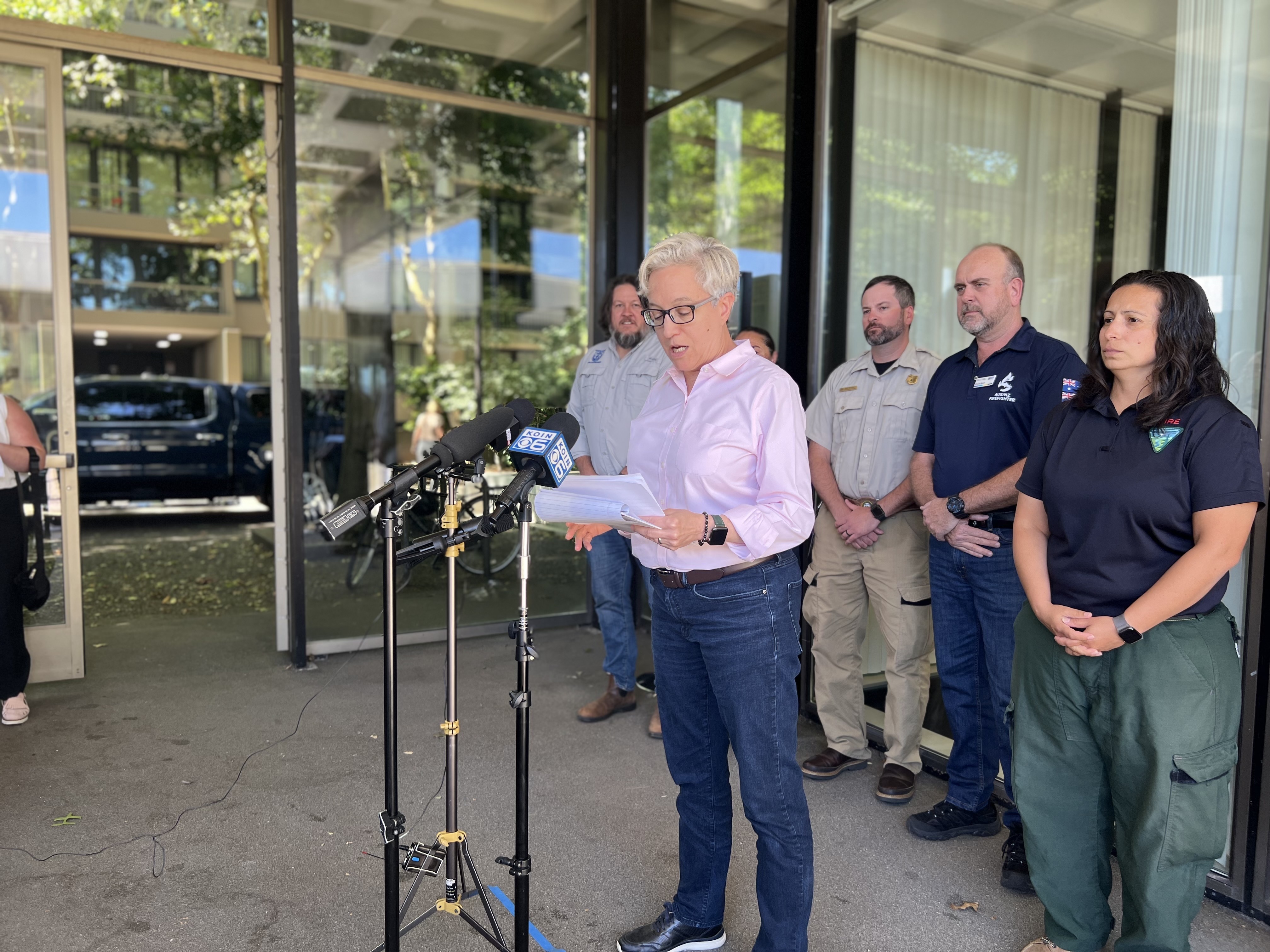
Gov. Tina Kotek addresses reporters about the 2024 wildfire season in downtown Portland.
Dirk VanderHart / OPB
Cooler and wetter August weather has tapped the brakes on a wildfire season that looked to be speeding out of control in July.
That’s given fire crews in Oregon necessary respite, Gov. Tina Kotek said Thursday. But she urged Oregonians not to be complacent.
“Right now, I think we’re all feeling good about the humidity and the rain we’ve been having, but the conditions are still dry,” Kotek said during a briefing in which she was flanked by state and federal fire officials. “A day of rain is not going to solve this problem.”
Four years ago on Labor Day weekend, hot and dry conditions combined with fierce east winds to produce the most destructive wildfire season in modern state history. While Oregon fires are often confined to the more sparsely populated land east of the Cascades, the 2020 conditions set broad portions of western and southern Oregon ablaze.
Hot, sunny weather is once again settling over Oregon this Labor Day weekend, but Kotek told reporters Thursday that meteorologists had no indication strong east winds were coming again this year.
“We’re feeling optimistic, but we should always stay prepared,” she said. “The weather can change.”
Though this year’s fire season hasn’t burned as many structures as in 2020, the more than 1.5 million acres burned so far are the most in modern recorded history. Fighting the fires has cost state agencies more than $240 million to date, Kotek said, though she noted a sizable portion of that would ultimately be refunded by the federal government.
State officials, led by Kotek’s office, are working on a proposal to increase and stabilize funding to prevent and fight wildfires, and lawmakers could take up recommendations next year. Kotek would not offer support for specific proposals, but said “all ideas need to be on the table.”
With fires sprouting up and spreading rapidly in mid-July, Kotek declared a statewide fire emergency to free up state resources to help people in need.
She and the state’s Congressional delegation have also asked federal agencies to loosen rules around where ranchers in fire-impacted areas can graze their cattle. Kotek said Thursday she has not yet received a response to those requests.
The weather in recent weeks has helped tamp down fires. The Northwest Interagency Coordination Center reported 11 large fires burning in the state on Thursday, which the Salem Statesman Journal noted is less than half of the major fires dominating the eastern and central portions of the state earlier this summer.
Still, more than 6,000 people are still out battling fires, Kotek said. Others are getting necessary downtime in preparation for September, historically the most dangerous part of fire season in the state.
“Fire season is still here. It won’t be over until there’s a lot more rain and a lot shorter days. We’ve got a couple months to go. So I need Oregonians to be cognizant of that.”


